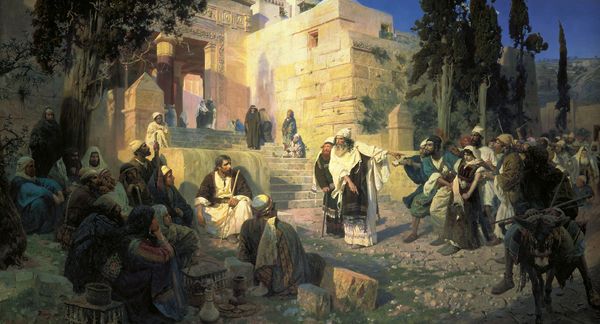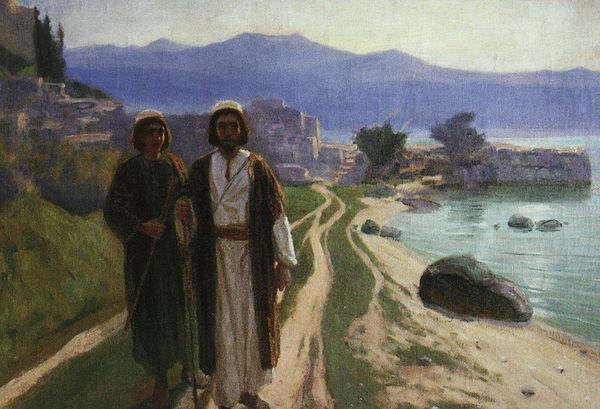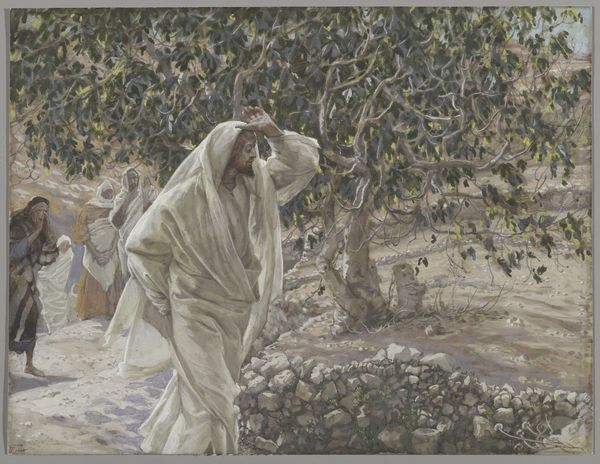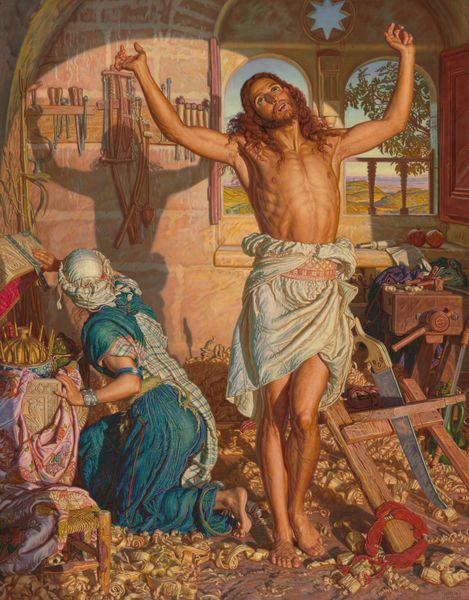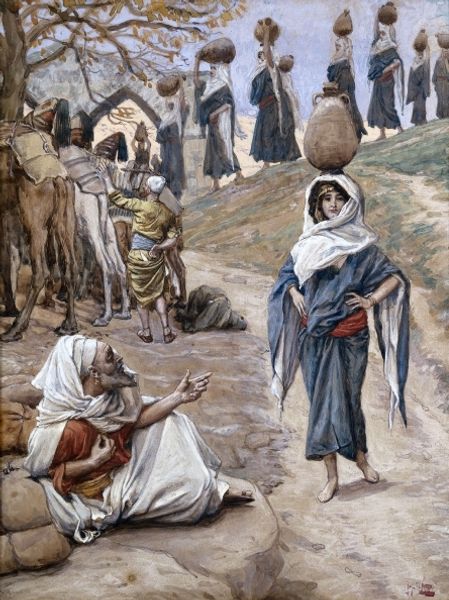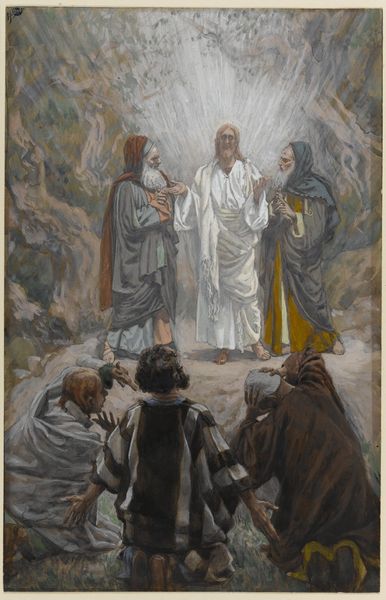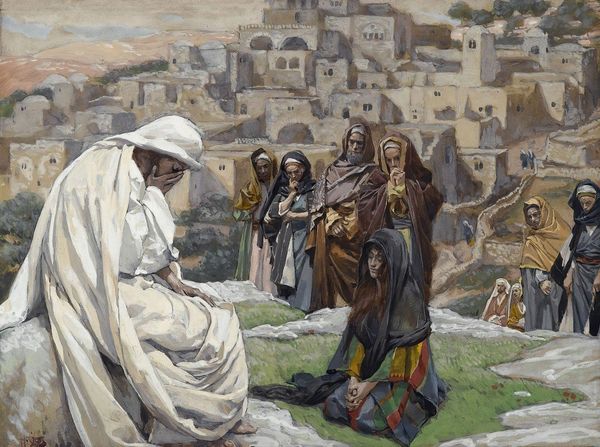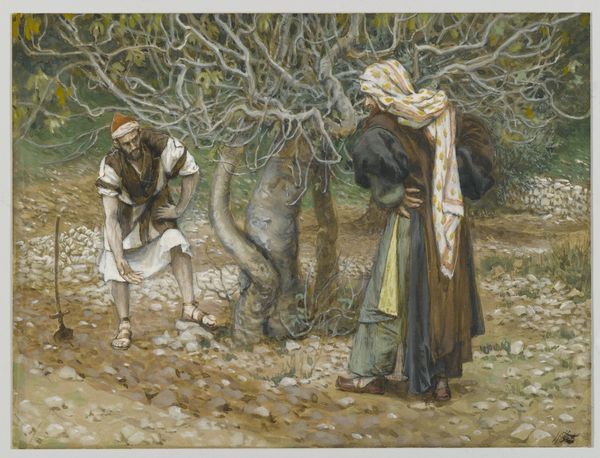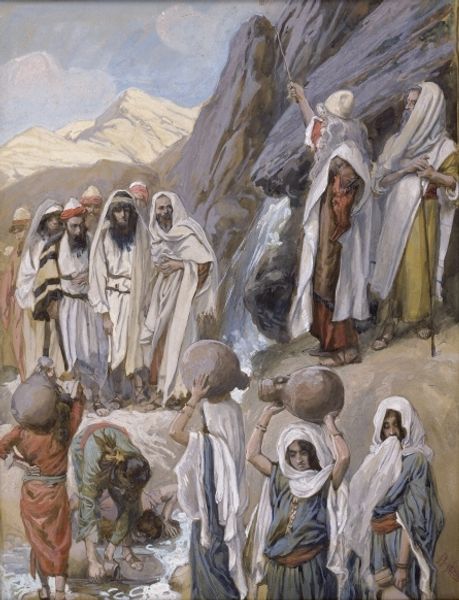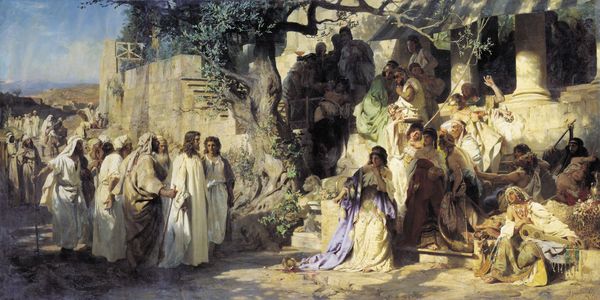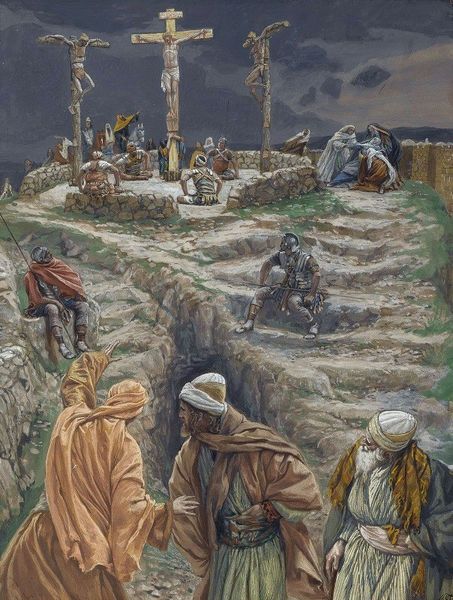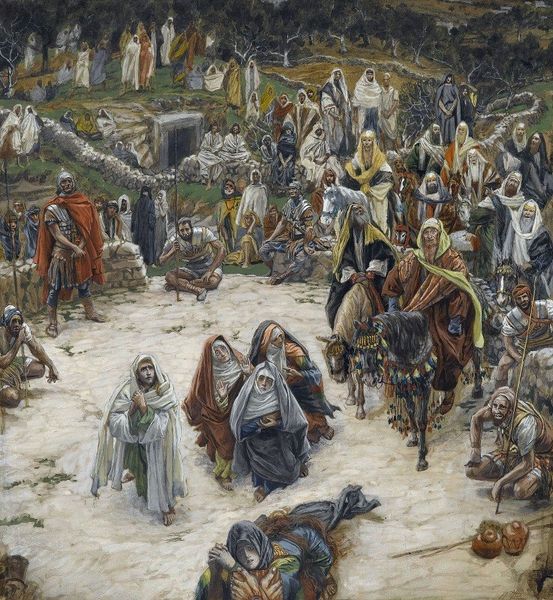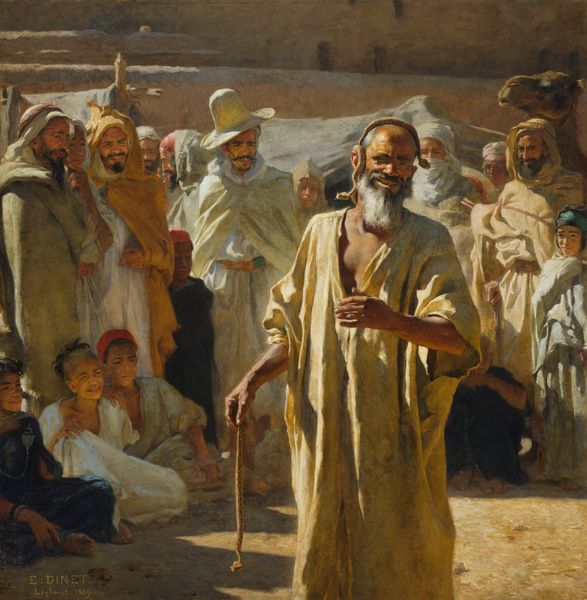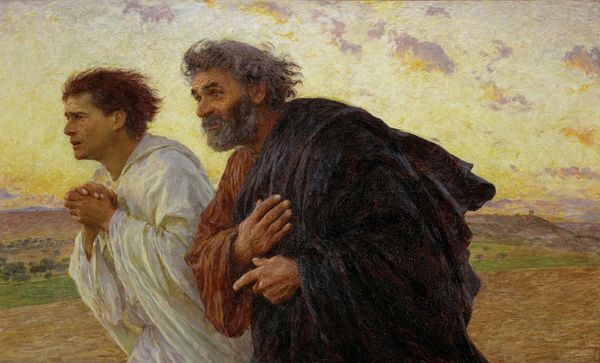
painting, oil-paint
#
painting
#
oil-paint
#
landscape
#
oil painting
#
genre-painting
#
academic-art
#
realism
Copyright: Public domain
Eugène Burnand's rendition of the Prodigal Son is rich with symbols that resonate across centuries. We see a man, arms outstretched, embodying divine mercy and forgiveness, while nearby, a figure lies prostrate, cloaked in tattered clothes, emblematic of repentance and despair. The returning son, in his destitution, echoes the motif of the wandering soul, a theme that stretches from ancient Greek tragedies to Renaissance allegories. This motif transcends cultures, appearing, for example, in the Buddhist concept of Samsara. The father’s gesture of embrace, a universal symbol of compassion, is a visual echo of countless depictions of divine grace, from Zeus extending his hand to mortals to Christ welcoming the weary. Consider how the posture of the son, curled and hidden from view, is a visual representation of shame, a psychological state deeply embedded in our collective unconscious. Through these symbols, Burnand taps into humanity’s shared experiences of guilt, redemption, and the ever-present hope for forgiveness. In art, as in life, these eternal motifs resurface, reborn in new forms, continuing their cyclical journey through the corridors of time.
Comments
No comments
Be the first to comment and join the conversation on the ultimate creative platform.
